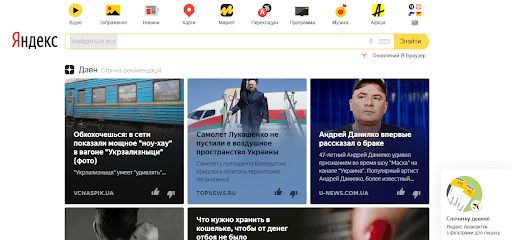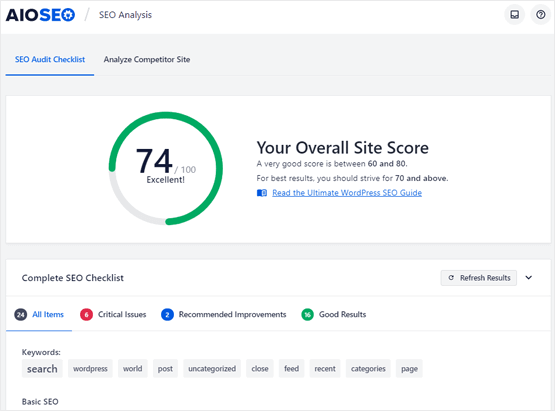Opening your business to markets in other countries can greatly increase your reach. But it does take time and effort. Learn how to avoid the usual pitfalls and how to build a sound multilingual SEO strategy.
We’ve invited authors of the WPML-recommended All in One SEO Plugin plugin to share their 5 top tips for doing multilingual SEO correctly.
Ready to Improve Your SEO?
Are you looking for a way to grow your business by introducing your product or service to an international market? If so, you should consider the benefits of developing a multilingual search engine optimization (SEO) strategy.
Today, we will go over the basics of multilingual SEO and show you some common mistakes you should avoid if you want to see a substantial return on investment when launching your multilingual online store.
What is Multilingual Search Engine Optimization?
The first thing we want to talk about is the purpose and benefits of a strong SEO strategy.
Marketers use SEO to increase website traffic by optimizing keywords, descriptions, and images for visitors and search engines. There’s much more to this technique than using the right words. You also need to work on link-building and backend optimization.
It’s possible to dramatically grow your lead list and increase sales if you know how to get your site to rank on the first page for industry-specific keywords. Once your brand starts appearing in the results for frequently searched words, thousands of people will naturally click on the link and read what you have to say.
After adding multilingual options to your site, you could see exponential growth through your translated pages. There are, without a doubt, countless people interested in your product or service, but English isn’t their native language. When you create a multilingual website, you’re opening your market to a broader audience, which means more prospects, sales, and opportunities to transform your customer experience.
The truth is, multilingual SEO takes plenty of time and effort to get right. You can’t simply pull all of your data from one language, translate it to another language, and expect to see positive results.
Now, let’s look at some of the most common mistakes business owners and marketing teams make when developing their multilingual SEO strategy and what they should do instead.
Not Fully Translating Your Website
One of the most common multilingual design and SEO mistakes occurs when a business owner first decides to offer their website in new languages. There’s a misconception that you can see strong SEO results by simply translating the important parts of your website.
While it’s true that translating frequently visited pages is an excellent way to make your site more accessible, it’s far from the only step you should take. Instead, you should complete the picture for your readers by translating everything from your content to contact forms.
Imagine visiting a website, and you can only read half of the pages. Would you feel comfortable completing an order? Probably not. Consumers want to have the freedom to explore all parts of your website without running into language barriers. Failure to take this step will result in a frustrating experience that will quickly deter people from doing business with your company.
With WPML, there are plenty of options for translating your entire website. For example, you could have a multilingual team member work on translations by assigning tasks through WPML’s state-of-the-art translation management system. It’s easy to assign translation tasks to WordPress users and expand the language selection on your site.
You’ll also have the option to use the automatic translation feature. Automated translations have made tremendous progress over the past several years, and it shows when you see how easy it is to translate pages into over 40 languages with WPML.
If you don’t have time or a multilingual team member, WPML can also connect you to an affordable professional translator. This option allows you to focus on generating leads, building engagement, and getting more sales. Meanwhile, your site is getting multiple complete translations, which helps expand your reach to an international audience.
Missing Keyword Research Opportunities
Now that you know why it’s essential to have a complete translated website, let’s talk about keyword research. Another mistake you should avoid is translating your keywords into another language and hoping you can copy and paste your way to more traffic.
You’ll need to do an in-depth keyword dive when ranking for each version of your multilingual website. There are words and phrases used in some countries that are rarely used in others. If you don’t adapt to these nuances, you’re missing out on significant SEO traffic.
Similarly, many consumers in different countries type words and phrases into search engines that are not exact translations.
When you’re working on SEO planning for your multilingual sites, it’s crucial that you use keyword research tools to find what people are searching for in specific regions. Once you’ve compiled a list, meet with a translator who fluently speaks the language to check for accuracy and missed opportunities.
(Source)
If you plan on targeting specific locations, you may want to ensure that you’re getting the dialect right too. One example to note is the word „coche,“ which means „car“ in Spain. However, if you ask people in most of Latin America what „coche“ means, they would say „baby stroller.“
Check for keyword language and dialect consistency across each multilingual version of your site, and you’ll have a better chance of attracting localized visitors.
Relying Solely on Google Search Results
When you consider that Google receives an astounding 77,000 searches per second, it’s easy to see why business owners and marketing teams think it’s the only search engine that matters. Google is the largest search engine globally, but it’s far from the only option for consumers.
Several search engines are language-specific. If you’re looking to reach users in a broad market, such as China or Russia, getting your site to appear in the results can have a significant impact on your sales and conversions.
In Russia, Yandex is one of the most popular search engines available. The website holds an impressive 46.04% market share. If you don’t optimize and get your site to rank on Yandex, you’ll only appear to half of your Russian audience. If you went through the trouble of creating a multilingual site, you shouldn’t miss out on this readily available opportunity.

(Source)
Baidu is a search engine based in China that’s used by 60% of the local population. It’s an excellent place to find new customers and leads, providing you submit your sitemap. It’s clear that Google is the most well-known search engine, but it’s still just a piece of the puzzle if you hope to sell to an international market.
We suggest researching the various search engine sites used in each of the countries you hope to target. If you understand how people are finding content and businesses, you can bet that you’ll have an easier time ranking your translated website.
Failing to Optimize Hidden SEO Factors
The next mistake business owners make when establishing multilingual SEO is they don’t focus on the hidden or less-visible factors that determine how well a page will rank. There’s an assumption that if the page’s visible content is SEO-friendly, the rest will follow suit.
We are here to tell you that this is not the case.
If you want to optimize your site for visitors, focus on improving your website’s backend and sections triggered by user interactions. Here are some elements you should change across languages:
- URLs
- Metatags
- Meta descriptions
- Image/video alt text
- Personalized Popups
- Product landing pages
- Contact/subscription forms
The best way to make sure your content and backend elements are properly optimized is with a tool like All in One SEO. The included SEO On-Page Analysis gives teams the freedom and flexibility to improve aspects of their site without bouncing back and forth between different versions.
All in One SEO is the perfect addition for multilingual businesses because it’s capable of analyzing content in 10 different languages, which means you’ll have an easier time optimizing each version of your site.
You can easily connect AIOSEO to Google Search Console, Yandex, Baidu, and more to enhance your discoverability. If you’ve already established your multilingual site, AIOSEO comes with an easy-to-use audit feature where you can get tips on fine-tuning your on-page SEO.

(Source)
Forgetting about Localized Link-Building Opportunities
Links play a crucial role in how well your website ranks across various search engines. Many algorithms behind the biggest search sites look at how many businesses and blogs link back to your site before determining where to place you in the results.
If you want to improve your SEO, you should look for opportunities for localized link-building. In other words, look for businesses in your target area and partner with them on guest posts, special offers, and by publishing valuable blog content.
When you create high-quality content for your blog, there’s an excellent chance that people will reference your posts in future articles. Focus on writing posts that educate and entertain your audience. Including statistics within your article is an excellent way to get people to point back to you when they need to use a stat and cite their source.
You should also look for chances to form partnerships with local businesses. For example, if your goal is to reach China’s tech market, you may want to connect with some of the influential websites that publish technology news and reviews. You could send out a unique guest post pitch or let them know that you have an affiliate program if they are interested in writing an honest review.
One way to find local websites is to search for your target keywords on the search engine where you would like to see your business. Look through the first couple of pages and take note of brands that have a similar target audience. So, an email marketing firm may want to partner with a hosting company because both products solve two specific problems with one end goal.
After you have a list of potential websites, reach out and see if any are interested in partnering up on projects. Before long, you’ll have a list of people across the globe ready to link to your content, which can boost your position across multiple search engines.
Final Thoughts
It’s not easy to create a successful multilingual website, but it’s an essential step you should take to grow your business. There are countless people that could benefit from your product or service, but you have to do the work so they can hear your message.
Avoid the pitfalls we’ve mentioned today and start developing your multilingual SEO plan. Before long, you’ll have an engaging website that’s available in multiple languages. If implemented properly, you’ll have more opportunities to connect with customers and become an internationally known brand.

